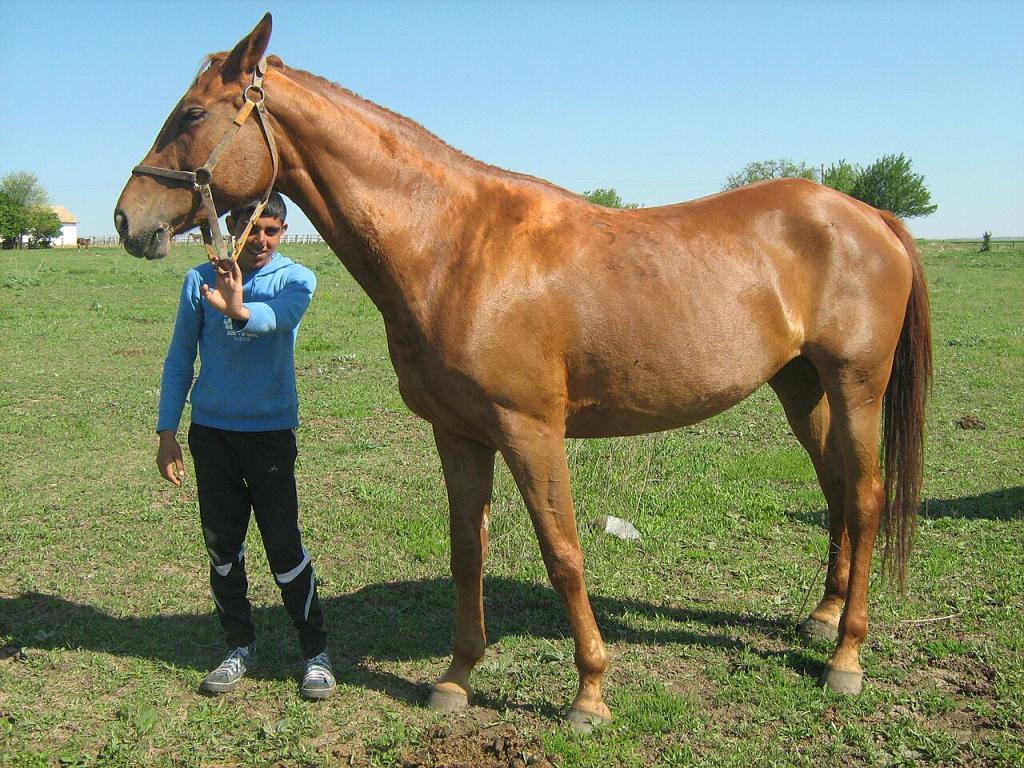
Continent: Europe
Country: Bulgaria
Weight: 450 – 550 kg
Height: 160 – 163 cm
The Pleven breed originates from the Pleven region, located in northern Bulgaria, near the national stud farm of Klementina, where it was developed at the beginning of the 20th century.
This breed is the result of a careful crossbreeding between local Bulgarian mares, known for their hardiness, and stallions primarily from Arabian, Thoroughbred, and Hungarian breeds such as the Anglo-Arabian and Gidran.
Initially, the Pleven was selected to meet military needs, providing a mount that was robust, enduring, and manageable.
Later, the breed was also used for agricultural work due to its versatility and strength.
Today, the Pleven is recognized as an athletic and elegant sport horse, appreciated for its intelligence, vivacity, and courage—qualities inherited from its diverse origins.
This geographical and genetic origin gives the Pleven a strong identity and a close connection with Bulgarian equestrian heritage, while also being influenced by the best European breeds to improve performance.
The breeding of Pleven horses is mainly concentrated in northern and northwestern Bulgaria, particularly around the city of Pleven and former stud farms such as Klementina and, more recently, Kabiuk stud.
These areas offer a suitable environment, with pastures conducive to extensive breeding. The breed is considered local and rare, with breeding remaining mostly national and little export abroad.
The Pleven breed plays a crucial role in preserving Bulgaria’s equine genetic heritage. Its gene pool, resulting from controlled crossbreeding of local and foreign breeds (notably Anglo-Arabian and Gidran), conserves sought-after characteristics such as robustness, endurance, and versatility.
This genetic diversity is essential to maintain the vitality of the breed, reduce risks linked to inbreeding, and provide a solid genetic base for breeding programs aimed at improving size, conformation, and sporting aptitude.
The Pleven breed was created at the beginning of the 20th century at the national stud farm of Klementina, through a selection program combining local Bulgarian mares with Arabian, Thoroughbred, and Hungarian stallions (notably Gidran).
Officially recognized in 1951, this breed initially served mainly military purposes, before being used in agricultural work and, more recently, in equestrian sport disciplines.
Its stud book was established in 1959, formalizing the breed standards. However, the closure of the national stud farm weakened centralized management, leading to a decline in population numbers.
The Pleven is known for its intelligence, courage, and liveliness. This horse generally shows willingness, sensitivity, and responsiveness, qualities appreciated in dressage and show jumping disciplines. Its balanced temperament makes it suitable for both experienced riders and younger ones. Its longevity and good resistance to diseases nevertheless require regular care to maintain optimal performance.
Despite a significant decline in numbers over the past decades, the Pleven now benefits from conservation programs and governmental support, notably through European aids aimed at preserving endangered animal breeds. These measures, combined with renewed interest in versatile local sport horses, could allow stabilization or even a slight increase in population. Genetic improvement through targeted crossings and promoting the Pleven in equestrian competitions are key directions for its future.
To date, no specific health problems or major hereditary predispositions have been recurrently reported in the Pleven breed. However, as with any sport horse, rigorous maintenance, good nutrition, and regular veterinary monitoring are necessary to prevent locomotor disorders and common diseases. The genetic diversity preserved within the breed helps limit risks linked to inbreeding and hereditary diseases.